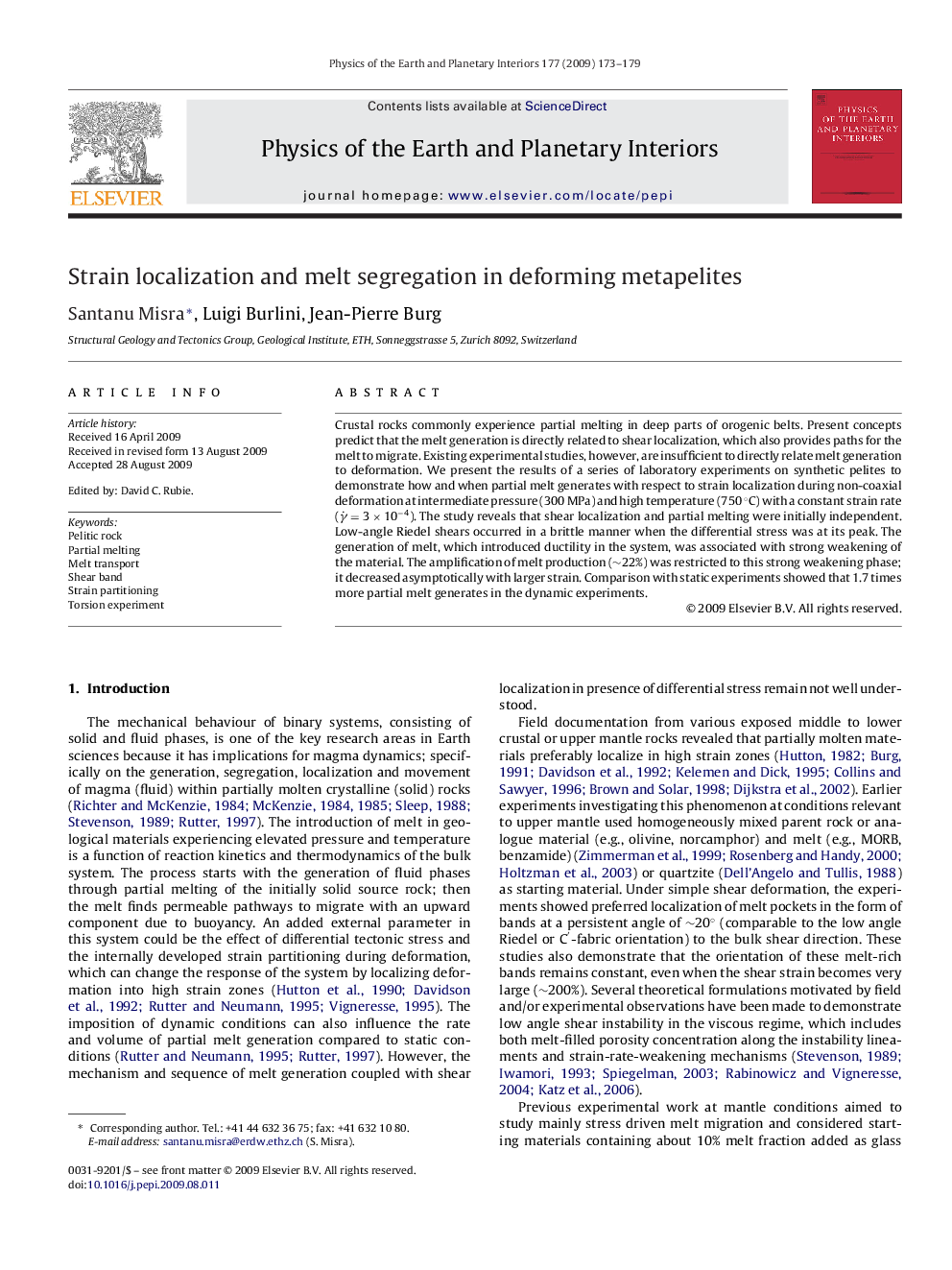| Article ID | Journal | Published Year | Pages | File Type |
|---|---|---|---|---|
| 4742344 | Physics of the Earth and Planetary Interiors | 2009 | 7 Pages |
Crustal rocks commonly experience partial melting in deep parts of orogenic belts. Present concepts predict that the melt generation is directly related to shear localization, which also provides paths for the melt to migrate. Existing experimental studies, however, are insufficient to directly relate melt generation to deformation. We present the results of a series of laboratory experiments on synthetic pelites to demonstrate how and when partial melt generates with respect to strain localization during non-coaxial deformation at intermediate pressure (300 MPa) and high temperature (750 °C) with a constant strain rate (γ˙=3×10−4). The study reveals that shear localization and partial melting were initially independent. Low-angle Riedel shears occurred in a brittle manner when the differential stress was at its peak. The generation of melt, which introduced ductility in the system, was associated with strong weakening of the material. The amplification of melt production (∼22%) was restricted to this strong weakening phase; it decreased asymptotically with larger strain. Comparison with static experiments showed that 1.7 times more partial melt generates in the dynamic experiments.
